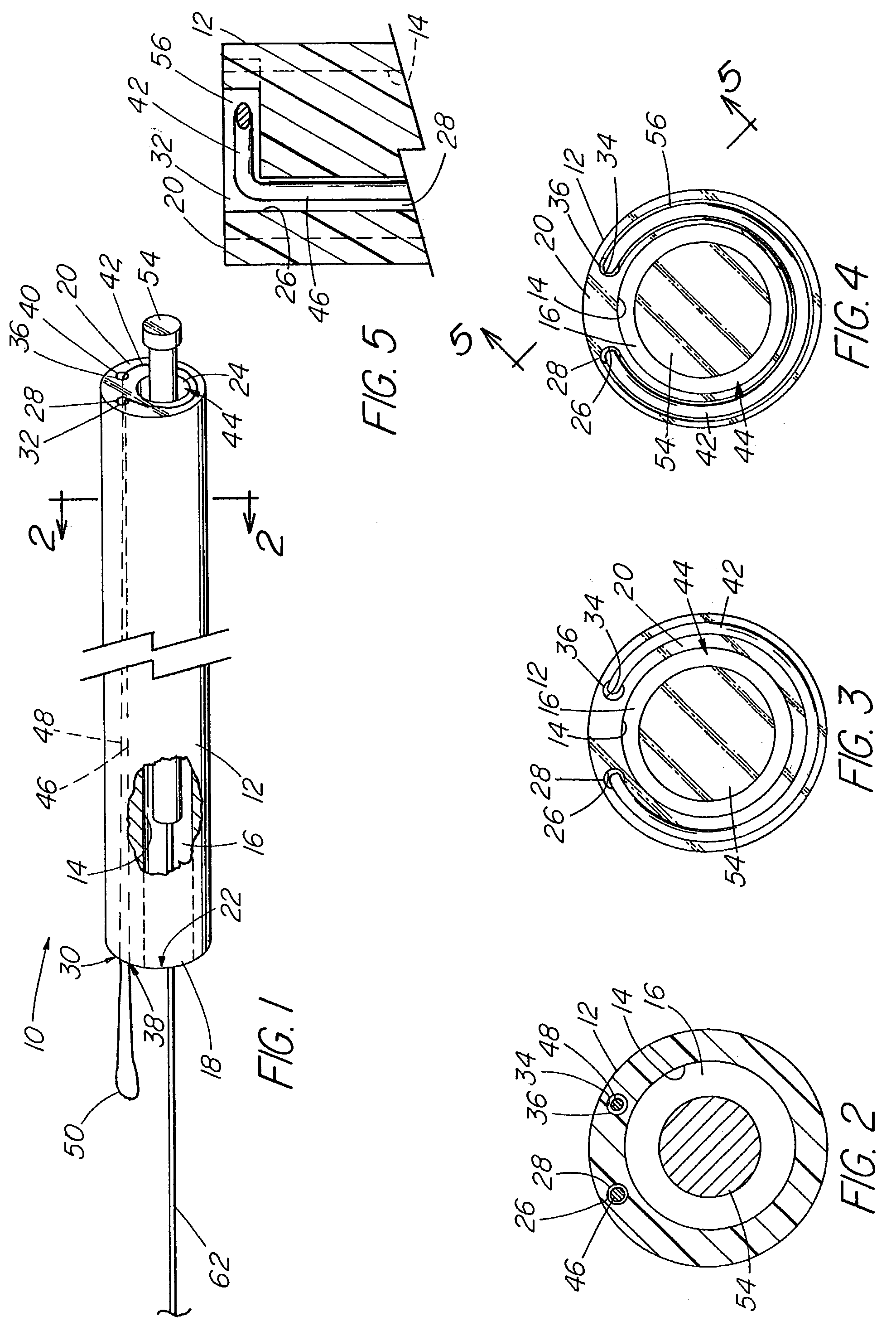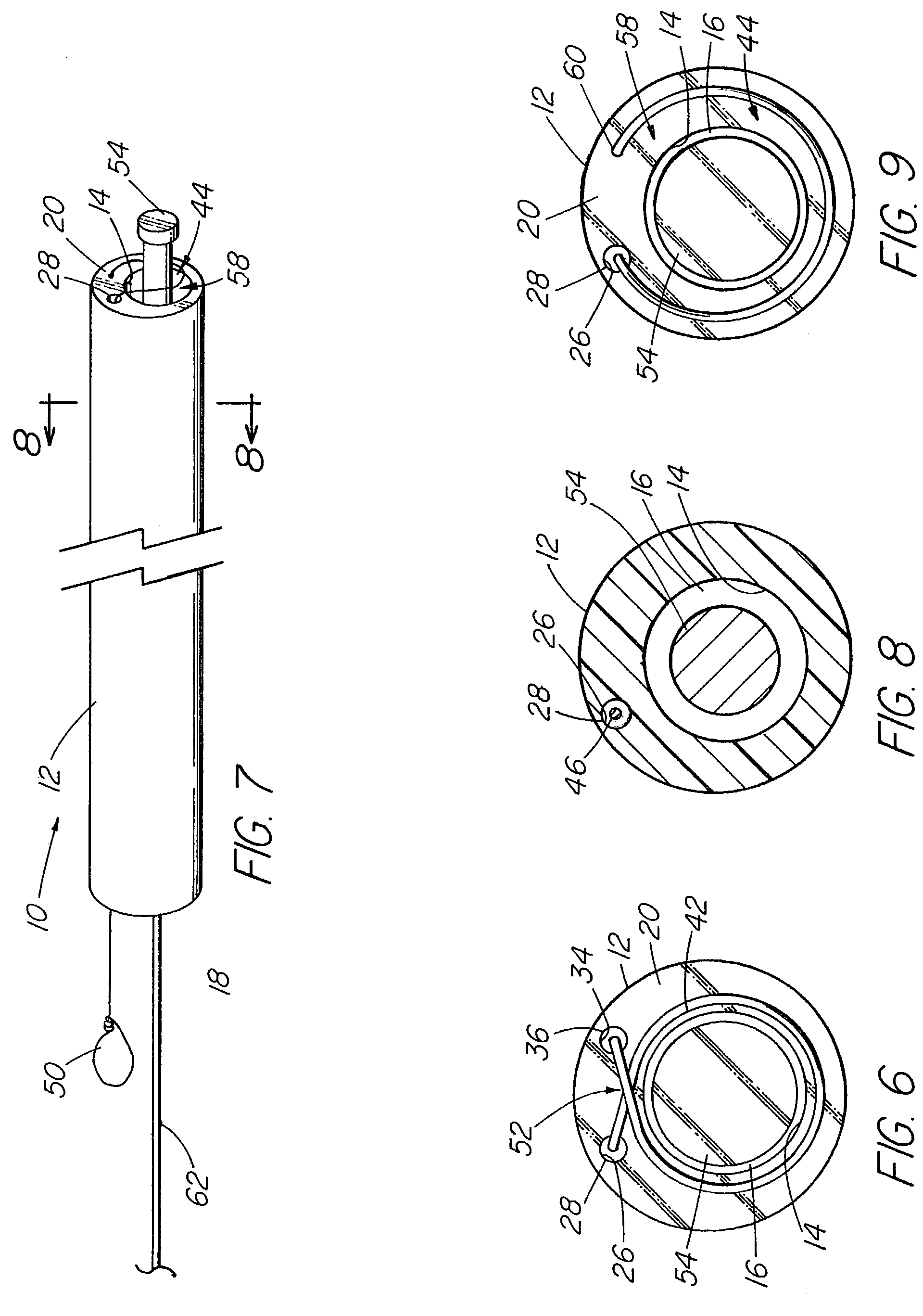Device for removing an elongated structure implanted in biological tissue
- Summary
- Abstract
- Description
- Claims
- Application Information
AI Technical Summary
Benefits of technology
Problems solved by technology
Method used
Image
Examples
Embodiment Construction
[0036]With reference to FIGS. 1 through 3, a first embodiment of a snare-type device 10 according to the present invention is thereshown, useful for removing a previously implanted elongated structure 54 (such as a catheter, a sheath, a defibrillator lead, a pacemaker lead or the like) from a human or veterinary patient, for example, from the vascular system of the patient. For convenience, the elongated structure 54 may have previously been separated from any encapsulating tissue by use of another device, several of such devices being known. Alternatively, it is possible that the device 10 could itself be adapted to perform such severing. Also, for convenience a guide wire or extension 62 may have been previously attached to aid engagement of the device 10 of the present invention with the elongated structure 54.
[0037]The device 10 of the present invention first comprises a sheath 12 having a first wall 14 defining a first lumen 16 therein. The sheath 12 is preferably tubular in co...
PUM
 Login to View More
Login to View More Abstract
Description
Claims
Application Information
 Login to View More
Login to View More - R&D
- Intellectual Property
- Life Sciences
- Materials
- Tech Scout
- Unparalleled Data Quality
- Higher Quality Content
- 60% Fewer Hallucinations
Browse by: Latest US Patents, China's latest patents, Technical Efficacy Thesaurus, Application Domain, Technology Topic, Popular Technical Reports.
© 2025 PatSnap. All rights reserved.Legal|Privacy policy|Modern Slavery Act Transparency Statement|Sitemap|About US| Contact US: help@patsnap.com



